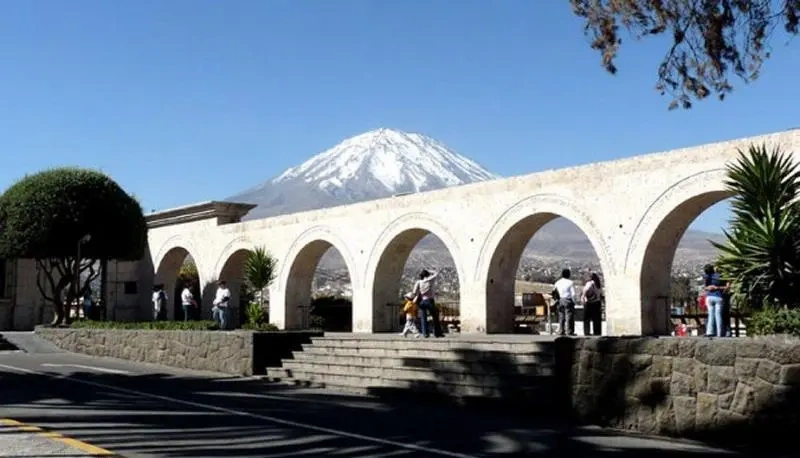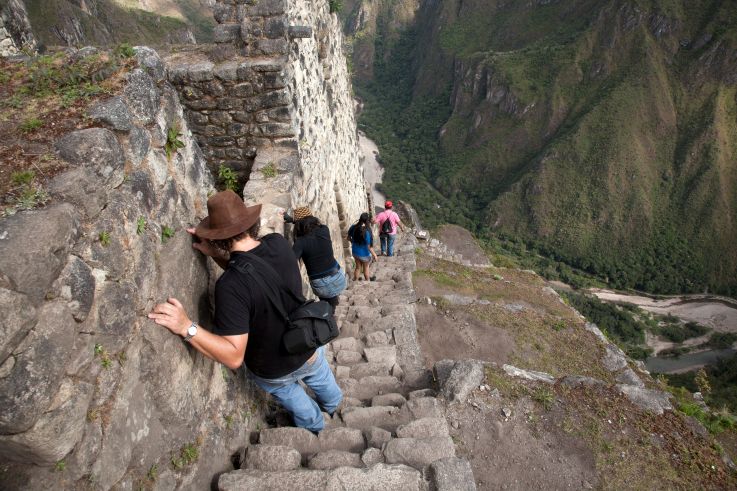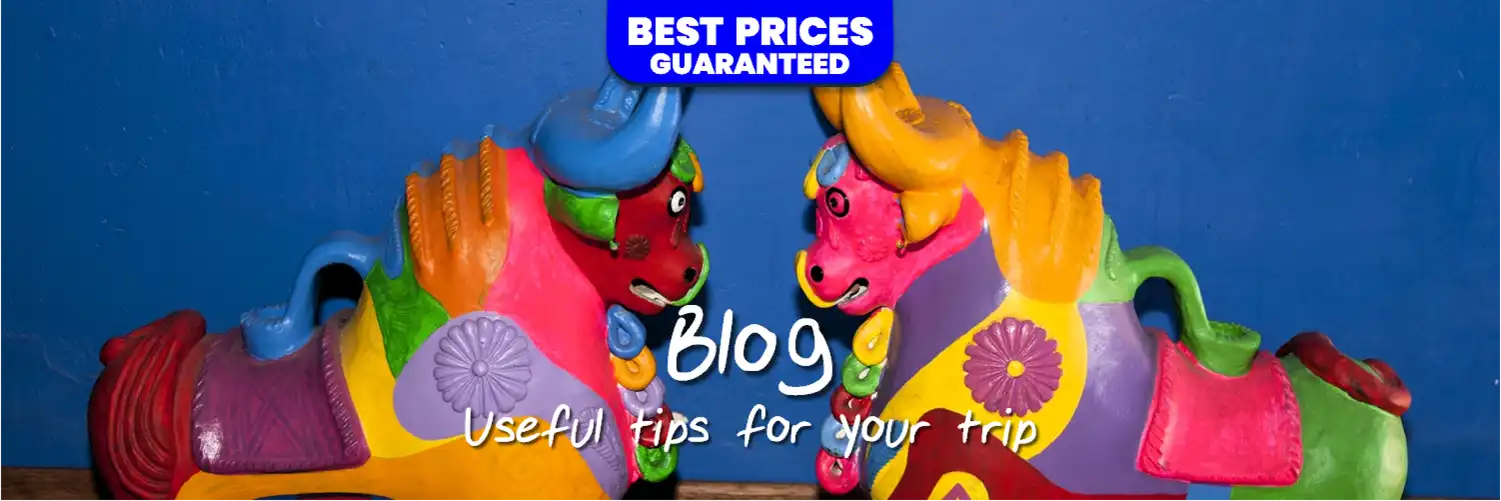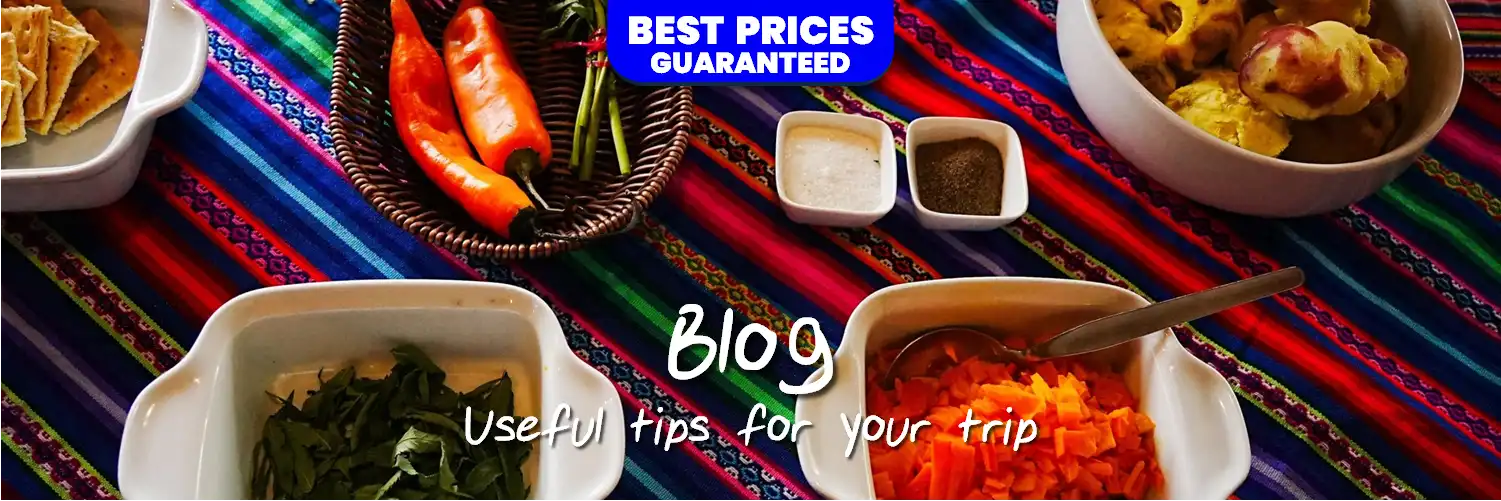7 Best Backpacker Destinations in Peru (Beyond Lima and Cusco)

Peru is probably already on your radar: Machu Picchu, llamas, ceviche, party nights in Lima or Cusco… But if you’re planning a backpacking trip to Peru and only stick to those classic spots, you’re missing a huge part of the adventure.
This guide is for young travelers and backpackers (roughly 18–35) who want to go further: from snow-capped peaks and turquoise lakes to desert oases, pre-Inca ruins, jungle lodges and lakeside villages. You’ll find 7 backpacker-friendly destinations in Peru beyond Lima and Cusco, all easy to connect in one trip.
Think of Lima and Cusco as your Peru backpacking hubs where you can stay at social hostels, meet people and then jump out to explore these other regions.
How to use this guide
For each destination you’ll find:
Why it’s great for budget travelers
Top things to do
How many days to stay (rough idea)
Backpacker tips for costs, safety and logistics
We’ll also weave in some key phrases that travelers actually search for, like “backpacking Peru”, “Peru travel guide” or “Peru 2 week itinerary”, so this guide lines up with what you’d Google when planning your trip.
Quick tips for backpacking Peru
When to go
Andes (Cusco, Arequipa, Huaraz, Puno): best from May to September (dry season, clearer skies for trekking).
Coast (Lima, Paracas, Ica, Trujillo, Máncora): sunny and warm roughly from December to April.
Amazon (Iquitos): hot and humid year-round; it rains often but tours still run.
If you’re building a Peru backpacking route that mixes mountains, desert and jungle, May–September is usually the sweet spot.
Buses, flights and getting around
Long-distance buses: the classic way to travel Peru on a budget. You can choose between cheaper local companies and more comfortable, safer ones.
Domestic flights: worth it for long stretches like Lima–Cusco or Lima–Iquitos if you’re short on time.
Colectivos (shared minivans): very cheap for short distances, less comfy but very local.
And don’t forget that Peru’s official tourism site and classic travel guides like National Geographic or Lonely Planet have solid overviews of distances and regions if you want extra context.
Budget basics
For a typical backpacker in Peru, you can roughly expect:
Hostel dorm bed: 10–15 USD per night
Local meals / set menus: 3–6 USD
Intercity bus: 15–40 USD depending on class and distance
Day tours: 25–60 USD (entrance fees included in many cases)
With hostels, street food and night buses, backpacking Peru on a budget is absolutely doable.
1. Arequipa & Colca Canyon – volcano views and one of the deepest canyons on Earth
Arequipa, the White City, sits at the foot of giant volcanoes and has one of the prettiest historic centers in Peru. It’s also the launchpad for the famous Colca Canyon, often included in “must-see destinations in Peru” lists.
Why backpackers love it
Beautiful colonial architecture and laid-back vibes.
Affordable restaurants and legendary Arequipeño dishes (try rocoto relleno and chupe de camarones).
A huge range of tours to Colca Canyon, from day trips to multi-day treks.
Strong hostel scene and plenty of other young travelers.
Top things to do
Explore the Plaza de Armas and streets of the historic center.
Visit the Santa Catalina Monastery, literally a “city inside a city”.
Chill at sunset in a rooftop bar with volcano views.
Take a Colca Canyon tour: either a one-day trip to viewpoints and condors, or 2–3 days trekking down into the canyon, staying in an oasis and hiking back up.
Multi-day treks are perfect if you want that “I survived this” feeling and a chance to bond with other backpackers on the trail.
2. Huaraz & the Cordillera Blanca – turquoise lakes and serious trekking
If you dream of turquoise glacier lakes and snow-covered peaks but can’t drop Alps prices, Huaraz will blow your mind. It’s the main base for exploring the Huascarán National Park, a UNESCO World Heritage site in the Cordillera Blanca.
Why backpackers love it
Huge variety of hikes: easy day trips and iconic multi-day treks like Santa Cruz or Huayhuash.
Very social backpacker vibe with agencies, gear rental, bars and cheap restaurants.
It’s a highlight in almost any Peru travel guide focused on trekking.
Must-do hikes
Laguna 69: a steep but rewarding day hike to a bright blue lake at over 4,000 m, with a glacier backdrop.
Laguna Parón: shorter climb but equally photogenic.
Santa Cruz Trek (3–4 days): classic Cordillera Blanca trek with epic landscapes every day.
Longer options like Huayhuash are legendary for experienced trekkers.
Practical tips
Huaraz itself is around 3,000 m. Plan at least one full day to acclimatize before pushing into high-altitude hikes.
Pack layers: strong sun, sudden rain, cold evenings.
Buy snacks and fruit from local markets to keep trekking costs low.
3. Iquitos & the Peruvian Amazon – jungle lodges and river life
Want to switch from mountain trails to Amazon rainforest? Iquitos is your gateway. It’s the largest city in the world with no road access – you arrive by plane or river – and a key base for Amazon expeditions in Peru.
Why backpackers love it
Completely different vibe from the Andes and the coast.
Lots of lodges that offer multi-day jungle packages including accommodation, meals and guided activities.
Amazing chances to see wildlife and learn from local communities.
Top experiences around Iquitos
Stroll along the Malecón (riverside promenade) and explore the historic center.
Visit Belén (with a guide for safety and context).
Take boat trips on the Amazon and its tributaries, especially at dawn or dusk.
Stay 2–3 nights in a jungle lodge with night walks, wildlife spotting and boat trips.
Health and safety organizations like the CDC and official travel advisories offer up-to-date guidance on vaccines, malaria precautions and jungle safety – worth checking before you go.
Jungle backpacking tips
Strong repellent, light long-sleeve clothing and decent boots are essentials.
Don’t go too cheap on tours; pick reputable agencies recommended by hostels or partners like Tourpit.
Bring a dry bag or waterproof cover for your electronics and documents.
4. Puno & Lake Titicaca – island homestays at the world’s highest navigable lake
Lake Titicaca tours appear in tons of Peru itineraries – and for good reason. The lake sits at about 3,800 m and is shared between Peru and Bolivia. Puno is your Peruvian base and a key stop if you’re connecting to La Paz on a South America backpacking route.
Why backpackers love it
Perfect stop between Arequipa and Bolivia.
Plenty of budget hostels and shared tours.
Strong Andean culture and community-based tourism projects.
Things to do
Visit the Uros floating islands, made entirely of totora reeds.
Take a full-day or overnight trip to Taquile or Amantaní islands. Many tours include a homestay with a local family.
Hike up to lookouts around Puno for panoramic lake views.
Tips
Nights are cold – pack proper layers, even if it’s sunny during the day.
First day: eat light, drink lots of water, avoid heavy alcohol; the altitude is real.
Choose tours that treat local communities fairly and avoid exploitative experiences.
5. Trujillo & Chan Chan – surf, colonial charm and pre-Inca ruins
If you like the idea of mixing city, coast and archaeology, Trujillo is a great alternative to staying only in Lima. Nearby you’ll find Chan Chan, the largest adobe city in the Americas and a UNESCO World Heritage site, plus other impressive complexes like the Huacas del Sol y de la Luna.
Why backpackers love it
Chill coastal city with colourful colonial architecture.
Easy access to Huanchaco, a surf town famous for its reed boats and relaxed vibe.
Cheaper than Lima in many ways (food, accommodation), especially if you’re watching your budget.
Things to do
Wander the historic center: plazas, churches and street life.
Explore Chan Chan with a guide to understand its history.
Visit the Huacas del Sol y de la Luna archaeological complex.
Hit Huanchaco for surf lessons, ceviche and sunset beers.
6. Ica, Huacachina & Paracas – desert oasis and coastal wildlife
Just a few hours south of Lima, you’ll find the oasis of Huacachina, surrounded by massive sand dunes, plus the coastal town of Paracas with its marine reserve and the so-called “poor man’s Galápagos” – the Ballestas Islands.
Why backpackers love it
Classic weekend escape from Lima for locals and travelers.
Strong party-hostel scene and tons of activities.
Easy to book combo tours that include Paracas, Ballestas Islands and Huacachina in one or two days.
Things to do
Ride dune buggies and try sandboarding at sunset.
Chill by the oasis with a drink after a long travel day.
Visit Paracas National Reserve for dramatic desert-meets-ocean landscapes.
Join a boat tour to the Ballestas Islands to see sea lions, penguins and tons of birds.
7. Máncora & the Northern Beaches – endless sun and surf vibes
If you’re coming from or heading to Ecuador, or just want some lazy beach days in your Peru itinerary, put Máncora and the northern beaches on your list.
Why backpackers love it
Warm weather and sunshine almost all year.
Plenty of surf schools, yoga sessions and beachfront bars.
A great place to rest, work remotely or just slow down after intense mountain or jungle trips.
Things to do
Take surf lessons or rent a board and hit the waves.
Do day trips to quieter beaches nearby if you want less party.
Enjoy fresh seafood and ceviche in local restaurants.
Sample Peru backpacking route (2–3 weeks)
Fast 2-week Peru itinerary for backpackers
Lima – 2–3 nights (arrive, get over jet lag, explore the city)
Paracas & Huacachina – 2 nights
Arequipa & Colca Canyon – 3–4 nights
Puno & Lake Titicaca – 2–3 nights
Cusco & Machu Picchu – 4–5 nights
Extended 3–4 week backpacking route
Add some or all of these:
Huaraz & Cordillera Blanca – 5–6 nights (treks and day hikes)
Trujillo & Chan Chan – 3–4 nights (archaeology + surf in Huanchaco)
Máncora – 4–7 nights (beach and surf stop on your South America backpacking route)
Iquitos & Amazon – 3–4 nights (jungle lodge experience)
This kind of route aligns well with popular search intent like “backpacking Peru”, “Peru travel guide” and “Peru 2 week itinerary”, while still giving you enough flexibility to adapt based on your time and budget.
Where Pariwana Hostels fits into your trip
Lima and Cusco are the main hubs of most Peru backpacking routes. They’re where a lot of travelers:
Fly into or out of Peru
Book Machu Picchu and Colca Canyon tours
Meet new friends to continue traveling with
In Lima, staying at a backpacker hostel in Peru with a central location and a social atmosphere makes it much easier to join city tours and nightlife, or organize side trips like Paracas and Huacachina.
In Cusco, a lively hostel with group activities, tour desk and reliable Wi-Fi becomes your base between treks, Sacred Valley trips and Machu Picchu. Pariwana’s activity lineups in both cities are designed exactly for that: to help solo travelers meet people while traveling, join free walking tours, themed nights and more.
If you want more inspiration for your trip, check out the Pariwana Blog in English, packed with Peru travel tips, safety advice and destination guides:
👉 https://www.pariwana-hostel.com/en/blog/
✍️ Pariwana Editorial Team
Practical travel tips written by backpackers, for backpackers.

Everything you need to know to plan your perfect adventure in the Inca Citadel


